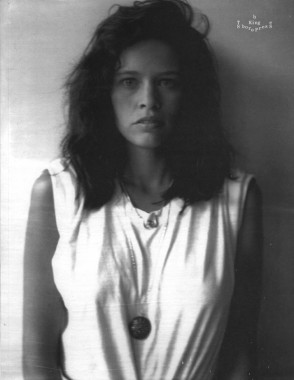
The Kingsboro Press 7
Softcover, 160 pp., offset 1/1, 8.5 x 11 inches
Edition of 500
Published by The Kingsboro Press
$20.00 ·
Founded in 2007 in Brooklyn, Kingsboro is a critical and engaged look at young art, design, literature, and approach every new issue as an artists print or unique edition, an entirely self-produced object with its own inherent visual language.
Adolph Reed, Alex Gartenfeld, Art, Brian White, Chip Hughes, Culture, Daniel Wagner, Distribution, Erik Lindman, Ethan Swan, Gus Van Sant, Harry Stephen Keeler, Hunter Hunt-Hendrix, James Vinciguerra, Joe Bradley, Jordan Awan, Mark Flood, Megan Plunkett, Mel Chin, Merlin Chowkwanyun, Michel Auder, Milano Chow, Miles Huston, Music, Penny Rimbaud, Rich Samis, Rikk Agnew, Seth Zucker, Tammy Feve, The Kingsboro Press, Will Boone, Yan Yan

White Zinfandel 1, Food
Softcover, 121 pp., offset 1/1, 9 x 13 inches
Edition of 500, numbered
Published by W/— Projects
$20.00 ·
A biannual publication by
W/— Projects in collaboration with
Leong Leong Architecture,
White Zinfandel is devoted to the visual manifestation of food and culture produced within the lives of creative individuals. This inaugural issue is an homage to the restaurant
Food founded by Gordon Matta-Clark, Caroline Goodden and Tina Girouard in 1971.
New York Magazine write-up. Interview Magazine blog.
A.B.A.K.E., Abigail Lorick, Amy Yao, Andrei Koschmeider, Andrew Onderjack, Annie Choi, Art, Ava Kaufman, Beth Lieberman, Caroline Goodden, Chiara Mondavi, Christina Galvez, Commonspace, Culture, Daniel Gordon, Distribution, Fashion, Food, Gordon Matta-Clark, Interview Magazine, Keegan McHargue, Ken Miller, Leong Leong Architecture, Lizzie Hodges, MacGregor Harp, Marc McQuade, Marcelo Gomes, Mari Eastman, Matt Le-Khac, New York Magazine, Pete Deevakul, Peter Sutherland, Scott Ponik, Seth Zucker, Siki Im, SO-IL, Sun An, Theophilus London, Tina Girouard, W/— Projects, White Zinfandel, William Pym
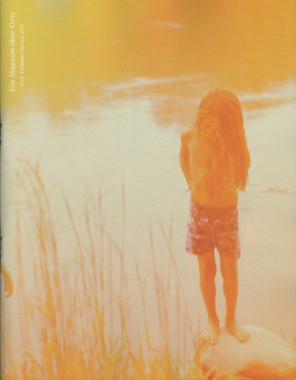
Ein Magazin über Orte 8, Paradise
Softcover, 84 pp., offset 4/4, 210 x 270 mm
Edition of 1000
ISSN 1866-2331
Published by Ein Magazin über Orte
$18.00 ·
Ein Magazin über Orte (A magazine about places) is published twice a year. It deals with a different location in every issue. The magazine collects works of various authors in the form of photographs, drawings and texts.
Agi Mishol, Art, Bela Pablo Janssen, Birgit Vogel, Brian Currid, Bruno Kurru, Bushra Rehman, Criticism, Culture, David Weiss, Distribution, Ein Magazin über Orte, Elmar Bambach, Gunter Kunert, Hans Magnus Enzensberger, Ibrahim Samuel, Jana Gontscharuk, Jeff Wall, John Copeland, Julia Marquardt, Kevin Coyne, Lidwien Van De Ven, Luc Tuymans, Marc Hieronimus, Marcus Oakley, Mark Borthwick, Michael Borremans, Mike Pare, Miranda July, Noor Damen, Peter Fischli, Photography, Raymond Meeks, Raymond Pettibon, Ryan McGinley, Theory, Wilhelm Werthern, Wolf Seiler, Zoe Leonard
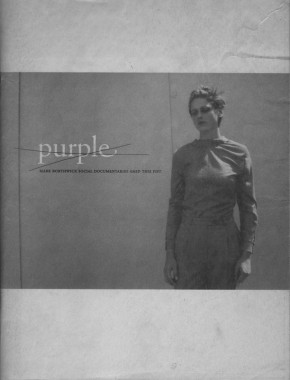
Mark Borthwick, Social documentaries amid this pist
Softcover, 240 pp., web offset 1/1, 210 x 270 mm
Edition of 250
Published by Mark Borthwick (2002)
$150.00 ·
condition:
good, minor edge wear, binding intact.
A social documentary. An appropriation of distinctions between elements. Grey area. An essay in images that repeat themselves. An apparent way to dilute the importance of one over another. Black and white photographs, hand written texts, and xeroxed pages.
Aaron Rose, Art, Bernadette Corporation, Bless, Brendan Fowler, Claude Closky, Culture, Desiree Heiss, Elein Fleiss, Ines Kaag, Made in USA, Maria Cornejo, Mark Borthwick, Nakako Hayashi, Olivier Zahm, Photography, Purple, Susan Cianciolo, Used
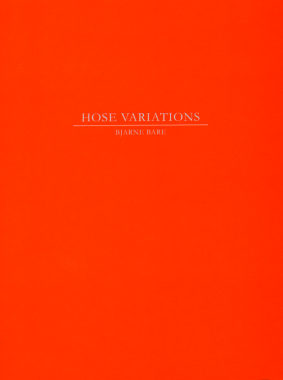
Bjarne Bare, Hose Variations
Softcover, 40 pp., offset 4/4, 190 x 260 mm
Edition of 500
ISBN 978-82-998640-0-8
Published by Cornerkiosk Press
$26.00 ·
Hose Variations is the first book by Bjarne Bare. This monograph, as the title suggests, consists of studies of hose variations. It is a study of time in between human interaction, where the dead moment, rather than the decisive, is in focus. The surroundings and placement of each hose reveal their owners character and is a light anthropological study of man, as well as a take on the traditional documentary genre of photography. It consists of Bares recent work from Berlin, Buenos Aires, Lodz, Los Angeles, and Oslo.
Anthropology, Art, Bjarne Bare, Cornerkiosk Press, Culture, Distribution, Los Angeles, Photography
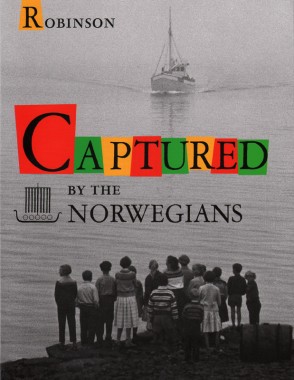
Robert A. Robinson, Captured by the Norwegians
Hardcover, 168 pp., offset 3/1, 8.5 x 11 inches
Edition of 1500 in English
ISBN 978-82-998127-5-7
Published by Aki Books / Flamme Forlag
$50.00 ·
The 1953 edition of
Captured by the Norwegians by Robert A. Robinson, has been re-published by Norwegian publishers Aki Books & Flamme Forlag. As well as reproducing the previous edition, this new book also includes new texts by David Campany, Frode Grytten and a personal interview with Robinsons long time friend Dan Young. This edition has also been published in Norwegian, under the title
Tatt av Norge.
Captured by the Norwegians was conceived in 1953. The publisher decided that no restriction of any sort should be placed upon the author. He therefore looked at Norway freely through impartial eyes, and the result is a volume of pictures by one who came as a stranger and stayed as a friend.
“Robinson’s photographs are also reminiscent of those included in the ‘Family of Man’ and it is tempting to see Captured by the Norwegians as a local expression of the same sentiments but the comparison is complex. Steichen aimed to subsume national identity in a new globalized oneness that skirted politics and ideology in favour of a utopian common round of experience. Many accused it of sentimentalism, political naivety and a deep Americanism that was actually far from international. By comparison Robinson’s book is a humble vision that makes so few claims for itself. I find it an honest, unpretentious and endearing account of one person’s experience and expression. But maybe it has taken that half a century to re-realise this.”
— David Campany
Aki Books, Culture, Dan Young, David Campany, Distribution, Flamme Forlag, Norway, Photography, Robert A. Robinson
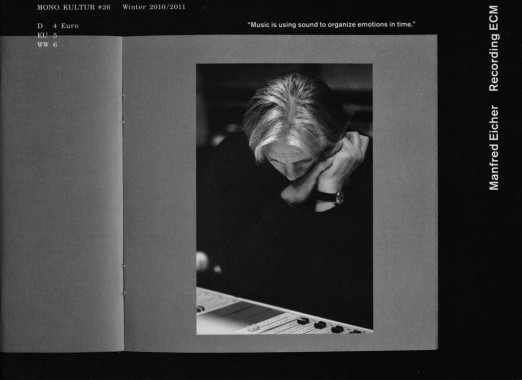
Mono.Kultur 26, Manfred Eicher — Recording ECM
Softcover, 42 pp., offset 1/1, 200 x 150 mm
Edition of 5000
ISSN 1861-7085
Published by Mono.Kultur
$9.00 · out of stock
Born in 1943 in southern Germany, Manfred Eicher dedicated his life early on to music, learning violin as a child, and studying double bass and classical music at the Academy in Berlin. On parallel tracks, he pursued an equally traditional self-education in jazz: through relatives in America, records bought in G.I. stores,
The Voice of America, listening to Bill Evans at the Village Vanguard, playing double bass in German jazz bands and with visiting musicians including Marion Brown, Leo Smith and Paul Bley.
In 1969, a meeting with the American jazz pianist and composer Mal Waldron led to Eicher’s first impromptu production and official release, Free at Last. The immediate success of the record beckoned for more, encouraging Eicher to move backstage and from then on to dedicate his life to finding and producing new music rather than performing. On the outskirts of Munich, with little financial backing, less strategy and no experience in production or managing a record label, Manfred Eicher launched ECM Records as a platform for jazz, a primarily American phenomenon on its wane.
Bernd Kuchenbeiser, Bill Evans, Caroline Heuer, Cheryl Koralik, Culture, Design, Distribution, ECM Records, Eva Gonçalves, Graphics, Joel Alas, Kai von Rabenau, Leo Smith, Manfred Eicher, Mareike Dittmer, Marion Brown, Mono.Kultur, Music, Paul Bley, Renko Heuer, Urs Bellermann
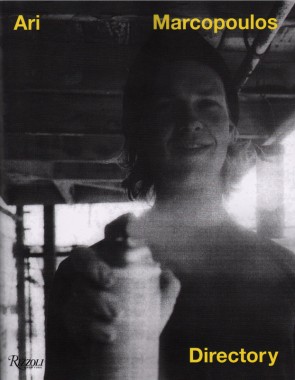
Ari Marcopoulos, Directory
Softcover, 1200 pp. + signed print, offset 1/1, 215 x 275 x 70 mm
First edition
ISBN 978-0-8478-3532-4
Published by Nieves
out of print
Ari Marcopoulos’s unique style of raw immediacy has made him one of the most important contemporary photographers. For thirty years, photographer Ari Marcopoulos has been pioneering contemporary photography by documenting subcultures such as skateboarders and graffiti artists, as well as landscapes and his own family and friends. Since his days printing photographs for Andy Warhol, he has amassed a huge body of work marked by its arresting and unsentimental intimacy that has been influential to the worlds of art, fashion, and photography. Bound to mimic a phone book, Ari Marcopoulos, Directory presents a collection of approximately 1,200 photographs, with curator and critic Neville Wakefield providing insightful commentary on some of Marcopoulos’s singular images. Copublished with Rizzoli, each book in this limited-edition series includes a print signed by the artist.
Ari Marco, Culture, Dung Ngo, Graffiti, Julie Schumacher, Neville Wakefield, Nieves, Photography, Rizzoli
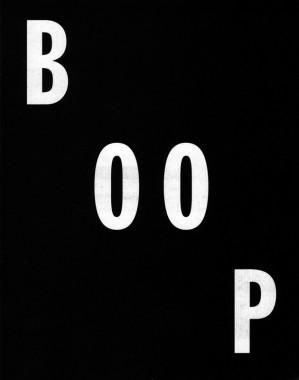
Ray Johnson and Bill Wilson, A Book About A Book About Death
Softcover, 58 pp., offset 1/1, 160 x 200 mm
Edition of 500
ISBN 978-94-90629-01-4
Published by Kunstverein
$15.00 ·
Ray Johnson wrote poetic texts and letters and integrated language and a unique system of cryptic signs into his work. Considered by many the ‘father of Mail Art’, as early as 1953 Johnson began sending highly conceptual images/texts to friends, often encouraging the recipient to ‘add to’ the work, or ‘please send to’ someone else, or ‘return to Ray Johnson’. Forming the ‘New York Correspondence School’ in 1962, Johnson established an enormous network of participants throughout the world — one that remains active even after his death. Between 1963 and 1965, Ray Johnson printed thirteen pages of his book about death with the Pernet Printing Company, 120 Lexington Avenue at 28th Street. His title, which designated the thirteen unbound pages as a book, is A Book about Death, yet also A Boop about Death and A Boom about Death.
In “A Book About A Book About Death” close friend and author Bill Wilson elaborates on each of the pages of “A Book about Death”.
Art, Bill Wilson, Culture, Distribution, Germaine Kruip, Jaan Evart, Krist Gruijthuijsen, Kunstverein, Marc Hollenstein, Maxine Kopsa, Ray Johnson, Stephen Serrato, The Mondrian Foundation
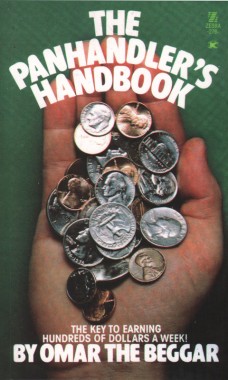
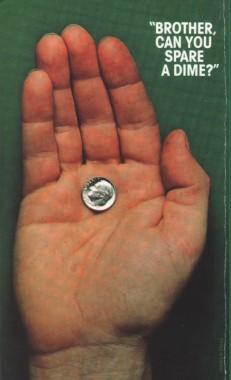
Omar the Beggar, The Panhandler’s Handbook
Softcover, 176 pp., offset 1/1, 105 x 175 mm
Edition of 500
ISBN 978-94-90629-05-2
Published by Kunstverein
$15.00 ·
This publication is a reprint of the
original The Pandhandler’s Handbook which was published by Kensington Publishing Cooperation in 1977.
Omar Rockford, founder of Omar’s School for Beggars, teaches out-of-work men and women how to creatively panhandle for a living. Successful, high-income begging on the streets requires imaginative deception. Omar demonstrates hundreds of foolproof methods in this handbook. You’ve got to have a glib tongue, a sense of urgency and a believable story – also proper dress and courtesy are a must. The first few weeks can be rough, since one isn’t easily adjusted to the embarrassment of being turned down. It takes about a month to become a real pro and practice does make perfect. With this practical guide, you’ll never need to work a real job again,
Alan Abel, Art, Culture, Distribution, Jaan Evart, Kensington Publishing Cooperative, Kunstverein, Omar Rockford, Omar the Beggar, The Mondrian Foundation
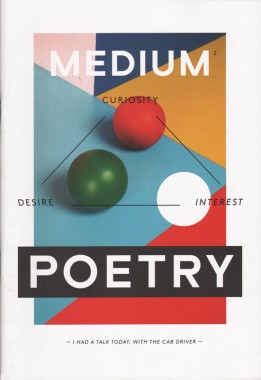
Medium 1, Poetry
Softcover, 64 pp., offset 4/4, 165 x 240 mm
Edition of 500
Published by Nieves
$14.00 ·
Today there was a guy leaning the wrong way in the tube. It was not immediately noticeable. There was no one else sitting nearby. No other passengers to compare him to. But then I did notice that every time the carriage came to a stop, he leaned away from the direction we were moving. Very slightly. Think about it. You’re supposed to lean forward. In the direction you were moving toward. Toward the point which the weight of your body was expecting to reach. Now this guy, he leans the other way. Just slightly. As a friend of mine would put it, he has a great sense of irony. Definitely. That’s important in life. They say that Rothko, he killed himself because he met the people who bought his art. No sense of irony. Me neither I don’t have any sense of irony. I like to take things at face value. Your wife she once told me that what led to the demise of the Black Panthers, aside from the absence of trust, and a murderous governmental incarceration campaign, it was their complete lack of a sense of humor. It was only much later that I realized she meant a murderous governmental incarceration campaign is actually a lot worse than not having a sense of humor. But these ironies are lost on me. Your sister and your wife they both say so. When I tell them things I find funny, they rarely laugh. I’m not even going to mention this guy in the tube to them. I recently told them about my bathroom sink in this hotel room. Real bad design. Flat. Which meant the liquid always accumulated in the corners. Instead of flowing down the drain. You had to use your fingertips to fish out the shaved hair stubble from the corners of the sink. Or it would just lie there. Waiting. You know what’s even funnier: you had to try and propel what you spat out when you brushed your teeth towards the center of the sink. Or you’d have mounds of mucus and toothpaste. Just drying in small heaps, here and there. Hilarious. And speaking of heaps of mucus. Another thing I’ll keep to myself – this was the funniest thing in years: I saw an old couple smooching in the street the other day. How often do you see that. Teenagers, yes. Or oldies arm in arm. But here you had oldies with their tongues down each other’s throats. Right there in the pedestrian zone. Eighty years old maybe more. Couldn’t believe it. I just stood there laughing. These oldies have no sense of humor either. They pretended not to hear me. But I could tell they heard me perfectly well. So now the carriage starts moving again, and I stand up, knowing I’ll exit at the next station. You see there are things I’m less sure about. Are they funny or just poetic. Lately my eyeballs scrunch as I close my eyes. A crunching sound. Brief, almost imperceptible. The sound is a bit like high-tech mechanics when they start aging. Wearing out. A whispering scrunching sound. Funny, or lyrical? Now as I exit the carriage, I notice there’s vapor in the air as I breathe, despite the high temperatures. It’s been like this all week. Again, very odd and almost funny. In a tiny, barely noticeable kind of way. Like the guy leaning the wrong way back there. As the doors slam shut, I turn around to look for him. I want to see which direction he’s leaning in as the train departs. Before I can assess his movements, he smiles and waves. I wave, but I fail to smile back. It’s just not funny anymore.
Art, Bastien Aubry, Culture, Distribution, Hassan Khan, Manuel Krebs, Nieves, Poetry, Samuel Nyholm, Shirana Shahbazi, Tirdad Zolghadr
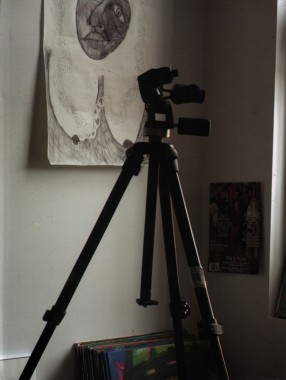
Asher Penn, Nothing Nothing Nothing Nothing 2004-2007
Softcover, 494 pp., offset 4/4, 6.75 x 9 inches
Edition of 1000
ISBN 978-0-982100-60-8
Published by An Art Service
$35.00 ·
In the style of Wolfgang Tillmans and Roe Ethridge, New York-based Asher Penn, born in Vancouver in 1982, captures the quotidian. As an anthology of artist books self-published by Asher Penn between 2004 and 2007 — an anthology that is effectively an artist book itself. Made between Providence, New York, Philadelphia and Vancouver, these ‘zine-like publications are rephotographed page by page on top of painted works that Penn was producing at the time of their re-publication. In rephotographing these original editions on the surface of recent work, Penn cleverly illustrates the creative vertigo capable of creeping up on artists while they look back at the artist that they have become. The artist books collected in this anthology include the following: 1. Just Say Maybe; 2. Go Fuck Yourself With Your Atomic Bomb; 3. Bad Hound, Buddha; 4. School; 5. Asher Mixtape Hell; 6. Elisa Penn Hero One; 7. Institutional Critique; 8. The Heart Wants What The Heart Wants; 9. Before And After; and 10. (Untitled).
An Art Service, Art, Asher Penn, Brendan Dugan, Culture, DAP, Photography, Richard Prince, Roe Ethridge, Wolfgang Tillmans
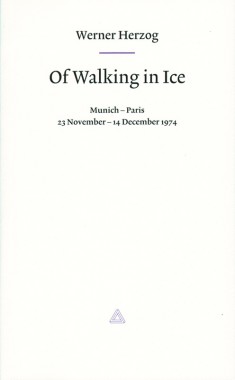
Werner Herzog, Of Walking in Ice
Softcover, 112 pp., offset 2/2, 5 x 8 inches
Edition of 2500
ISBN 978-0-9796121-0-7
Published by Free Association
$25.00 ·
Munich — Paris 23
November — 14 December 1974
In the winter of 1974, filmmaker Werner Herzog made a three week solo journey from Munich to Paris on foot. He believed it was the only way his close friend, film historian Lotte Eisner, would survive a horrible sickness that had overtaken her. During this monumental odyssey through a seemingly endless blizzard, Herzog documented everything he saw and felt with intense sincerity. This diary is dotted with a pastiche of rants about the extreme cold and utter loneliness, notes on Herzog’s films and travels, poetic descriptions of the snowy countryside, and personal philosophizing. What is most remarkable is that the reading of the book is in continuity with the experience of watching his films; it’s as if, through this walk, we witness the process in which images are born. Although he received a literary award for it, this introspective masterpiece has lingered out of print since 1979. Beautifully designed and emotionally impressive, Of Walking in Ice is the first in a color-coded series of remarkable yet long-forgotten titles being republished by Free Association.
Carl Hanser Verlag, Culture, Film, Free Association, Harsh Patel, RAM, Werner Herzog













